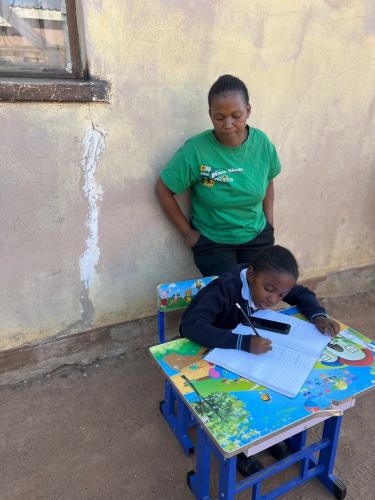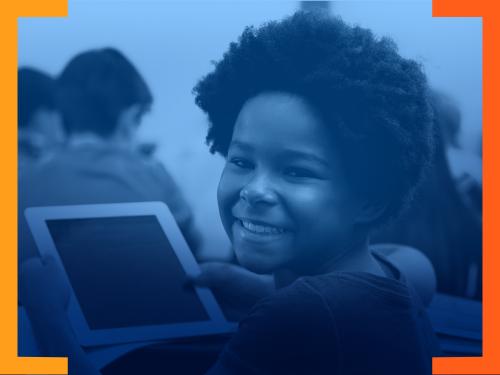Many readers may remember the massive open online courses (MOOC) craze of the early 2010s and the frothy prognostications of their transformational power. MOOCs were the future—they would furnish the least advantaged learners with the highest-quality learning, revolutionize the brick-and-mortar university, and directly deliver education that was accessible and equitable to anyone who wanted it. For those in the international development field, like me, MOOCs would eventually spell the demise of certain types of technical assistance as part of foreign aid.
Readers will also recall the less than laudatory rhetoric that accompanied emergency remote learning during COVID-19 school closures. When we needed online learning most, like an athlete cracking under playoff pressure, online learning—for a host of reasons—underperformed in far too many contexts. Even for many students in high-income countries lucky enough to continue their formal education in “online school,” learning online was accused of diluting education to its most rudimentary and reductionist form and of contributing to global learning loss.
Does it matter that for some, online learning gets the equivalent of a virtual hall pass while for others it is sent straight to the (online) principal’s office? I argue that it does.
The realities of these two poles of online learning perspectives—the MOOC and the emergency transition to remote learning—are more nuanced than presented above, but I begin with them because they signal long enduring dichotomous beliefs about online learning in general. At one extreme, we praise online learning for offering choice, ease of access to learning, and for disrupting what is often viewed as an unresponsive hidebound brick-and-mortar education system. Toward the other pole are those who wish to bury online learning—viewing it as a simulacrum of real learning, a techno-determinist, limp form of education with nefarious designs—to weaken traditional public education systems and elevate profits over learning.
I do not address each view head on here except to note that both contain elements of truth. As one who has designed online courses, taught online, and developed online learning programs for teachers across the globe since 2000, I’ve witnessed firsthand how well-designed online learning—albeit rare in my experience—can offer high-quality professional learning to teachers who might otherwise lack access to information and expertise in the communities in which they live. Since 2020, I have had the opportunity to immerse myself in more recent post-pandemic research—complex and often sobering—about online learning, and to interview teachers and educational technology experts across the globe both for UNESCO’s “Global Education Monitoring Report” (to be published in July 2023) and more recently as the author of the 2023 update of Education Development Center’s guide, “Distance Education for Teacher Training: Modes, Models and Methods,” originally published in the heady days of 2011, at the dawn of the MOOC craze and the growth of online learning. Why the dissonance in views around online learning? While views of online learning may be dichotomous, a good deal of both the hype and discontent arise from a common pool of incomplete understandings of teaching and learning online.
First, when it comes to online education, we often concentrate on the “online” part and ignore the learning and teaching components, as I’ve previously argued. Thus, we focus our attention on technology to the detriment of more important elements of online learning—good instructors, careful design, high-quality content, and excellent teaching. Next, for all its ubiquity, we may have little real understanding of online learning because it combines two areas that are particularly challenging to grasp—the mutable and protean nature of technology, which evolves at a breakneck pace, and the black box of how we learn, our understanding of which has unfolded more slowly. This holds true for both student learning and how teachers—the focus of this guide—learn to teach those students.
Does it matter that for some, online learning gets the equivalent of a virtual hall pass, while for others it is sent straight to the (online) principal’s office? I argue that it does. Understanding how to improve online learning is critical because it is arguably the most common form of distance learning across the globe in the most diverse range of contexts. And it will continue to be a critical component of education because of wars, pandemics, climate change, and the projected increases in the number of students and commensurate decline of teachers across the globe. It is often funded by taxpayers, yet is still poorly understood by policymakers and funders, who may eschew it entirely, believing it provides little value, or embrace it with gusto as a cure for what ails education systems. Both positions, arising from different viewpoints on online education, produce the same outcome: They reduce online education to a caricature of learning. Thus, if we are to extend quality educational opportunities to learners and their teachers across the globe, we need to address both the benefits and weaknesses of online learning in a holistic manner.
Suggestions from the Education Development Center’s guide
To get us there, I offer two general suggestions from the Education Development Center guide:
First, while equity and inclusion are important in online learning, it is quality that must be online learning’s first-order value. There is simply no value in scaling mediocrity, as we saw during emergency remote learning. Online learning standards—of which there are a plethora—properly applied, define a minimum level of quality, and help to create a consistent, shared, cross-sectional understanding of quality across all facets of online education—such as design, content development, instructor preparation, and learner competencies. Yet many online programs forgo standards entirely. This lack of a shared focus on quality in turn undermines one of the more compelling arguments for online learning—that it provides equitable access to quality learning to those for whom face-to-face learning is not an option. And it is this lack of quality that drives so much dissatisfaction and disappointment with this online learning.
Second—and here I refer specifically to teachers—while it’s easy to make claims for or against the educational worth of online learning, for teachers, it has often been far more difficult to determine the veracity of such claims. There is simply not enough rigorous research on the value of online learning for the teachers who engage in it, and how they best learn online—a fact that is both frustrating and harmful to the field of teacher professional development. We still need rigorous evidence on which online learning interventions show the most promise for which teachers, under what conditions, and how best to employ these interventions.
Even if we enact the above recommendations, there are still issues that make it difficult to assess the real value, or lack thereof, of online learning for teacher education. Standards, mentioned above, represent minimalist, not maximalist, guidelines. Research-related challenges abound. Learners cannot easily be randomly assigned to in-person or online instructors. It is difficult to establish a “clear counterfactual” since online courses generally do not substitute for in-person ones. Furthermore, teachers self-sort into online, blended, or in-person modes of distance learning. These factors, alone or together, can erode the links in any hoped-for causal chain, thus making assessment of the real benefits and tradeoffs of purely online versus blended or in-person learning for teachers more difficult.
Yet, failing to address the interrelated research challenges and being able to ascertain quality and the true value of online learning will remain unrealized and unknowable if we do not act with haste and designate sufficient resources. As our guide suggests, there is a need for changing mindsets about teaching and learning online, how people learn, and the change process itself. This demands organizational cultures that are supportive and inclusive, and it demands political will and commitment to long-term investment—not just in online technologies, but in human capacity development and organizational change to support teaching and learning that is mediated by technology. The requisite ingredients for a high-quality online system, like an in-person one—well-trained teachers, engaging content, access to technology, strong design, excellent instruction in various online modalities, a quality assurance system—are indeed daunting, particularly for countries with limited budgets, shortages of highly trained educators, weak education systems, and even weaker economies.
However, addressing the research challenges mentioned above should help prioritize analysis over intuition so we can assess the accuracy of competing claims about online learning and address what doesn’t work and build on what does. The many inputs identified by “Distance Education for Teacher Training” as critical to a quality online program accentuate what is most true, but also most overlooked about online education—that it is above all about education, not technology, that it must be conceptualized and designed holistically, not in a fragmented fashion, with a focus on quality as the tissue that connects all elements associated with online learning. If we follow such guidance, we may discover that online education will not transform learning, but neither will it undermine it. We may find instead that online education facilitates learning in ways we understand, can verify, and ultimately replicate.






Commentary
Getting the best out of online learning
May 18, 2023